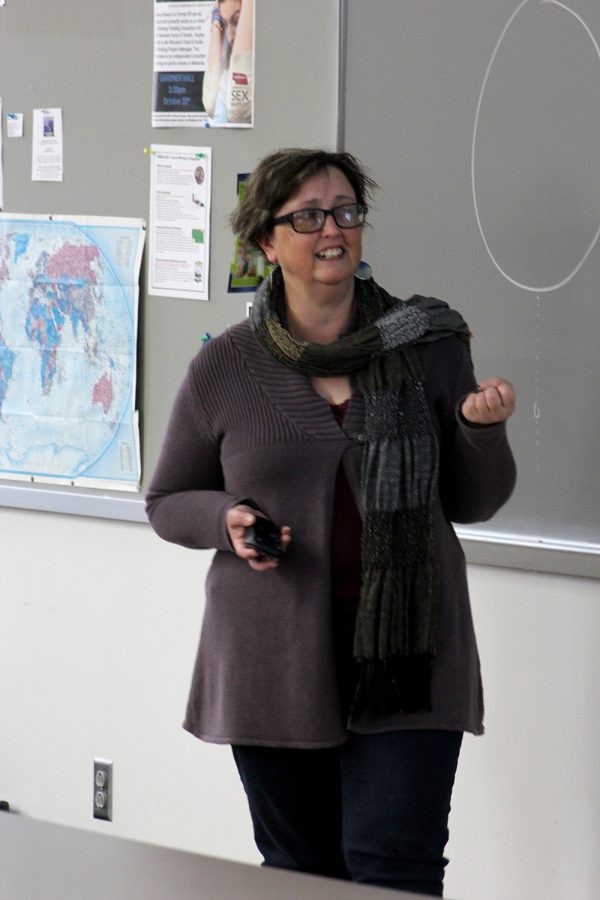Professor presents her research
Barbara Hayford
January 31, 2018
One of the most powerful features of Nebraska is its presence of nature. From the green tree days of spring and summer to the bleak and bare nights of autumn and winter, Nebraska’s ecosystem is something undeniably wonderful.
One professor at Wayne State College has done painstaking research on Nebraska’s environment. In a presentation last Friday, Dr. Barbara Hayford gave students and faculty a look at her career and her studies on Nebraska’s streams and the aquatic organisms that reside in them, along with the similarities of Nebraskan streams to Mongolian streams.
Hayford came to Wayne State College in 2000 and teaches biology classes at Wayne State College and is also the director of A. Jewell Schock Museum of Natural History. She received a Ph.D. from the University of Kansas, a MS from the University of South Colorado and a BS from Metropolitan State
College.
Hayford started her research of biodiversity of aquatic insects of Mongolia in 2003. The sites Hayford’s team inspected varied from small streams to rivers to hot springs. While there is a variety of aquatic insects present in streams and rivers, Hayford has done most of her extensive research with midges, a group of insects that includes many types of small flies.
One important part of biodiversity in these streams and rivers is the mix and loss of aquatic species. On a small level, the loss of some of the species seems to be unnoticeable. But, if more and more species are lost, this can leave a problem in the food chain. Along with feeding issues, lost species can result in missing special roles that only those species can fit in, meaning the loss of species can lead to loss of function in nature.
Another part of the trips and research was the Mongolian culture. Hayford and her research team had a taste of life was like in Mongolia, figuratively and literally. One interesting part mentioned in the presentation were the temples that lie in the less-populated parts of Mongolia. Some of the Mongolian-born researchers had never seen the temples, making it a new experience for both them and the American
researchers.
“The main message I want the audience to take from the presentation is that meaningful research and mentoring opportunities can be had at Wayne State College,” said Hayford.
Hayford will be leaving Wayne State College in May and is in talks of becoming a research affiliate at the University of Montana and an invertebrate taxonomist with Rhithron Associates in Missoula, Montana. Though she is leaving Nebraska, Hayford also leaves behind a legacy of mentored students.
“I’ve probably taught around 1,500 students or so in life sciences,” said Hayford “Including Wayne State College, I have mentored about 20 students, and mentored about seven or eight from our project. Almost every student I’ve worked with continues to work with me and Wayne State College in some way or another. It’s been very rewarding.”








